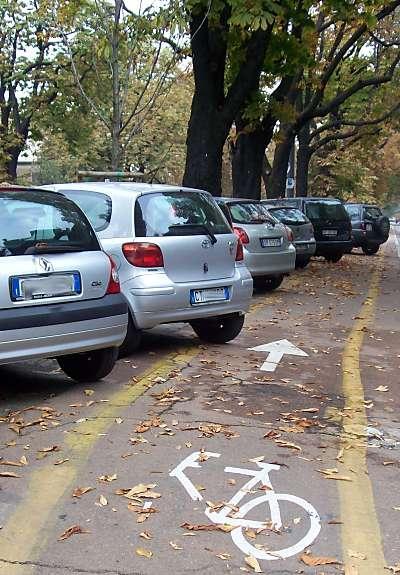 The following post is from Ray Thomas, a long-time bike commuter and a bicycle attorney in Portland, Ore. He frequently writes about Oregon bicycle law and bicycle safety.
The following post is from Ray Thomas, a long-time bike commuter and a bicycle attorney in Portland, Ore. He frequently writes about Oregon bicycle law and bicycle safety.
One of the largest ways any single individual can contribute to the health of the environment is to commute to work by bicycle. By simply making the commitment to bike to work, cyclists remove themselves from any number of environmentally damaging cycles, from consumption of fossil fuels to noise pollution to greenhouse gas emissions.
Unfortunately, automobiles have ruled the roads for so long that many people are too intimidated to share the road with them on a bicycle. While it’s true that cyclists are more vulnerable than motorists, a little extra vigilance and some defensive cycling practices can go a long way towards preventing bicycle injuries due to collision
Here are four safe cycling practices that can help make your commute less stressful:
1. Riding With a Mirror
A rearview mirror is typically not mandatory safety equipment for bicycles, and as a result you don’t see a lot of bike riders using them. Many riders rely on sound to alert them to approaching cars. However, a properly adjusted handlebar-mounted or helmet-mounted mirror can alleviate many safety concerns:
- It allows you to scan behind you without turning around and compromising your position on the road.
- You can constantly monitor your position relative to overtaking traffic.
- If you need to react quickly to avoid a car door, a patch of glass or some other hazard ahead of you, you can quickly assess whether it’s safe to swerve into traffic.
I’ve been riding with a rearview mirror for more than 15 years, and I’ve found it to be an invaluable safety accessory.
2. Riding With Traffic
Unseasoned bike riders are often uncomfortable with the idea of riding in the same direction as vehicular traffic. It goes against the pedestrian instinct, which is to walk against traffic so you can see the cars that are coming at you.
However, riding with traffic is much safer than riding against it. Here’s why:
- A motorist making a right turn from a driveway, parking lot or cross street will be looking for traffic coming from the left; they won’t be expecting traffic coming at them from the wrong direction.
- Cars approach you head-on at a much higher relative speed than from behind (their speed plus yours). This gives you and the driver less time to react.
- If you need to make a right turn while riding against traffic, you would have to dangerously cross several lanes in order to do so.
3. Passing on the Left
When riding the correct way on the side of the road or in a bicycle lane, a common hazard for bike riders is cars that suddenly turn right, either hitting or cutting off the cyclist. Often these motorists don’t check for bike riders who may be riding next to or right behind them.
It’s a good idea to assume that the cars next to you might turn right at any time – without signaling – which means passing a vehicle on the right can be a dangerous move. You can avoid this hazard by passing vehicles or other cyclists on the left instead. Your rearview mirror will let you know when it’s safe to do so.
4. Making Yourself Visible
I’m not talking about headlights or reflector tape, which of course are important tools in your bicycle safety arsenal. I’m talking about where you position yourself relative to the cars around you.
When bicycling on the side of the road or in a bike lane, it’s especially important not to ride in a vehicle’s blind spot. If you’re tailing a slow-moving vehicle, it’s better to ride behind it than next to it. When stopping next to a car that is stopped at a light, the best options are to position yourself a little ahead of the car (so the motorist can see you) or a little behind the car (so the vehicle won’t hit you if the motorist decides to suddenly turn right).
By implementing these defensive cycling practices, bike riders can safely share the road with motorists and avoid many hazardous situations.
[Image source]

